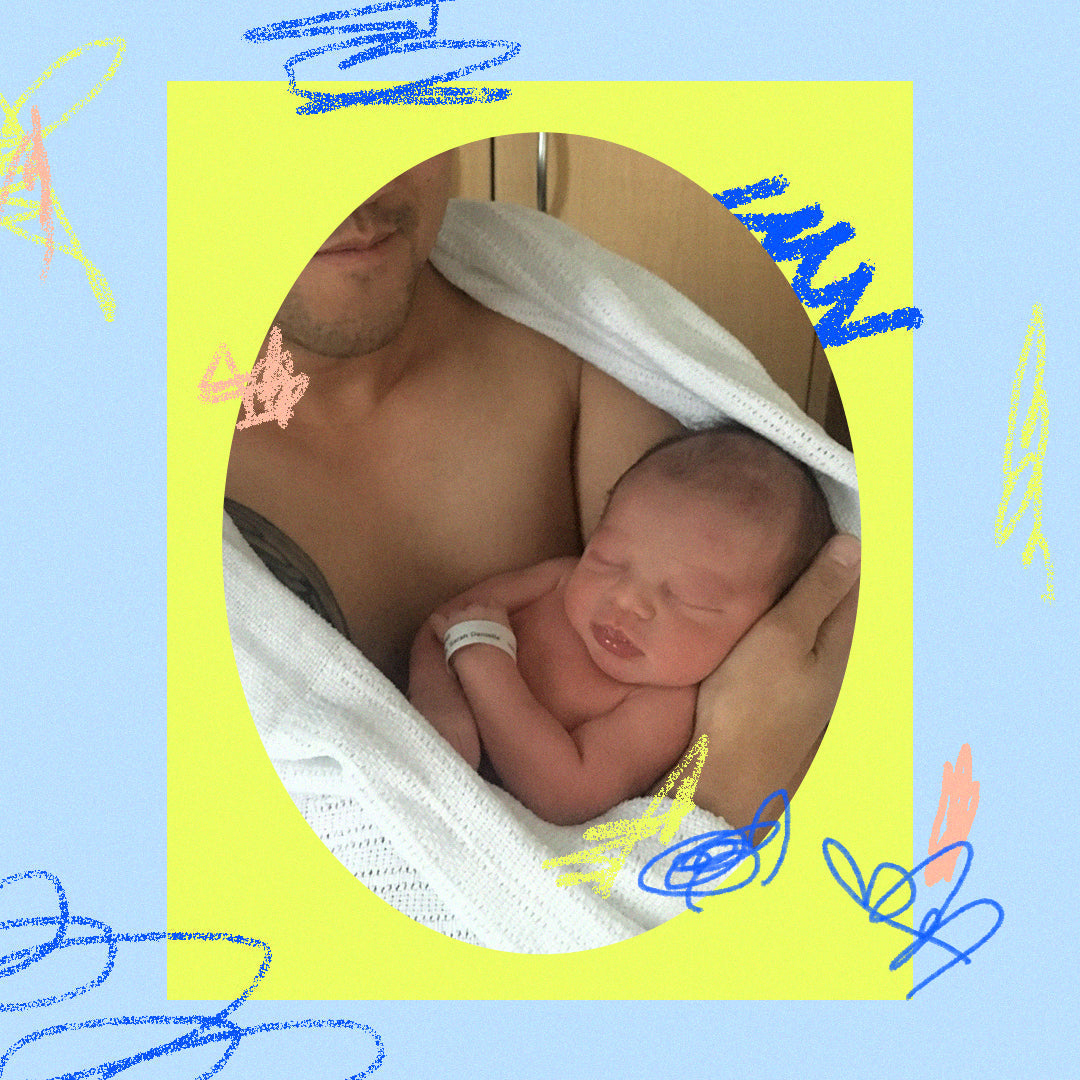How to Support Your Partner and Newborn
At any given birth, there are at least three people who are born: a child and its parents. And while the focus is (and should be) on the mother and child in those early days, significant others can often feel a bit…helpless. With no distinct roles, but still a seismic shift going on in their lives, it’s easy to feel a bit untethered, like a bystander in their own family. As my partner put it in the early weeks after our first son was born “there I was with my utterly non-functional nipples, feeling completely overwhelmed and useless every time he cried.”
The good news is: there is a lot of practical support (both emotional and physical) that a non-birthing parent can give which will make a huge difference to the entire family dynamic, and increase the connection to their child — non-functional nipples or not. Here’s some research-backed ways to help them, and also you in these early days.
1. Have some skin to skin contact
There’s a reason that your medical teams encourage skin-to-skin contact (aka: “kangaroo care”) immediately after birth: science has proven it to enhance the father-infant bond, and boost parental confidence. One study showed a significant decrease in the stress response and parental anxiety while another out of Taiwan noted the positive effects skin-to-skin contact had for bonding, attachment and confidence. Not only does it strengthen the emotional connection, it can also stabilise the baby’s vital signs too. This study showed that newborns who received skin to skin contact after delivery had a more stable heart rate, more regulated temperature and less duration of crying — so yes it really does benefit everyone.
2. Be involved in the birth process
While ultimately you’ll be the one birthing, you can give your partner an active role even before the baby is born by involving them in birthing discussions and allowing them to be an active birthing partner which will only strengthen your bond. Doing a course like SheBirths will help guide you through not only the practicalities of birth, but what the non-birthing partner can physically do pre-and-during labour (think: acupressure, massage, breathing, meditation).
But it’s also important to have open conversations with your partner about all potential birthing outcomes. Whether you have a desired birth plan or not, things don’t always go according to plan and your partner will need to be your advocate during that time — so it’s important to be on the same page with what you do and don’t want.
If you’re scheduled for a planned caesarean, discuss the procedure with them in detail so they know what to expect, and make them aware of the healing process. It may surprise them to learn that it’s lengthy and involved (it’s major surgery after all) so the lifting and driving will rest on them. And, just as with a vaginal birth, involve them by asking them to play music, take photos, or just hold your hand if that is what you need.
3. Help with feeding
Regardless of whether you’ve planned to breastfeed, bottle feed or both, the non-birth parent can get involved in the feeding process by assisting with an (expressed or formula) bottle feed where possible. For many couples this will mean one of the early night feeds (as they may already be back at full time paid work). Not only will this give you a chance to rest, or get an early sleep before the nighttime wakes, it will increase the bonding experience, foster a positive feeding environment and give them a vital role in contributing to the nutritional needs of your newborn. As this study highlights, father involvement in feeding their young children is so important in shaping healthy eating patterns, and it all starts here.
4. Be clued in about the hormones
Postpartum hormones are no joke. With the sharp drop in progesterone and oestrogen mood swings are part of the experience, alongside the other fun stuff like intense emotional and physical changes. This drop in hormones is particularly poignant around 3-5 days post birth, so knowing that this is on the way your partner can prepare themselves and be mindful that they’ll need to be extra understanding and empathetic during this time. But, it also goes both ways with 1 in 10 dads struggling with depression after their child is born, so go gently with yourselves during this time, it’s a big change for everyone.
5. Help with the housework
It may seem like a no brainer but having your partner proactively handle household chores can alleviate a lot of stress in an already stressful time. A study from the NCBI emphasises the positive impact of fathers taking paternity leave, which often involves taking on household responsibilities, on the wellbeing of the entire family and promotes greater involvement in childcare activities when the kids are young. Essentially, it flexes a muscle that continues to grow in confidence and the upshot is an engaged, active parent. And remember, just because you’re technically at home with your baby, it does not mean you’re not working — it’s just unpaid work. Get ahead of the issue by having the conversation before the baby is born and dividing up household labour tasks, so that they don’t all fall on the mother.
6. Wear the baby
The need for human touch is innate to all of us, but in babies especially it’s vital to their development. Whether your partner holds the baby in their arms or a carrier, as this study shows, the act itself is calming for the baby and also helps them to know their parent by smell, touch, sight and sound. Not only that, this physical contact is beneficial for the adult too (especially frontal contact) as it stimulates oxytocin (the “love” hormone) and helps them attune to their baby’s needs.























